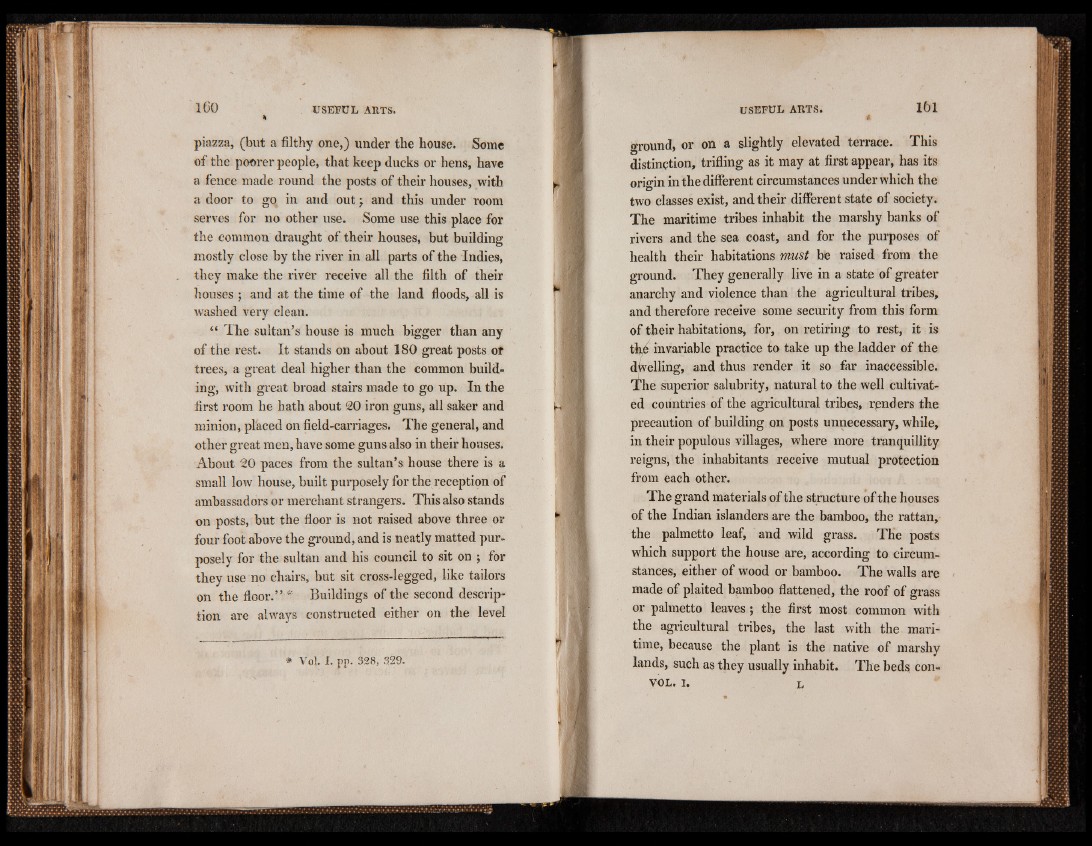
,
piazza, (but a filthy one,) under the house. Some
of the poorer people, that keep ducks or hens, have
a fence made round the posts of their houses, with
a door to go in and out j and this under room
serves for no other use. Some use this place for
the common draught of their houses, but building
mostly close by the river in all parts of the Indies,
they make the river receive all the filth of their
houses ; and at the time of the land floods, all is
washed very clean.
“ The sultan’s house is much bigger than any
of the rest. It stands on about 180 great posts or
trees, a great deal higher than the common building,
with great broad stairs made to go up. In the
first room he hath about 20 iron guns, all saker and
minion, placed on field-carriages. The general, and
other great men, have some guns also in their houses.
About 20 paces from the sultan’s house there is a
small low house, built purposely for the reception of
ambassadors or merchant strangers. This also stands
on posts, but the floor is not raised above three or
four foot above the ground, and is neatly matted purposely
for the sultan and his council to sit on ; for
they use no chairs, but sit cross-legged, like tailors
on the floor.” * Buildings of the second description
are always constructed either on the level
* Vol. I- pp. 328, 3,29.
ground, or on a slightly elevated terrace. This
distinction, trifling as it may at first appear, has its
origin in the different circumstances under which the
two classes exist, and their different state of society.
The maritime tribes inhabit the marshy banks of
rivers and the sea coast, and for the purposes of
health their habitations must be raised from the
ground. They generally live in a state of greater
anarchy and violence than the agricultural tribes,
and therefore receive some security from this form
of their habitations, for, on retiring to rest, it is
tfee invariable practice to take up the ladder of the
dWelling, and thus render it so far inaccessible.
The superior salubrity, natural to the well cultivated
countries of the agricultural tribes, renders the
precaution of building on posts unnecessary, while,
in their populous villages, where more tranquillity
reigns, the inhabitants receive mutual protection
from each other.
The grand materials of the structure of the houses
of the Indian islanders are the bamboo, the rattan,
the palmetto leaf, and wild grass. The posts
which support the house are, according to circumstances,
either of wood or bamboo. The walls are
made of plaited bamboo flattened, the roof of grass
or palmetto leaves; the first most common with
the agricultural tribes, the last with the maritime,
because the plant is the native of marshy
lands, such as they usually inhabit. The beds con-
v o l . i. l